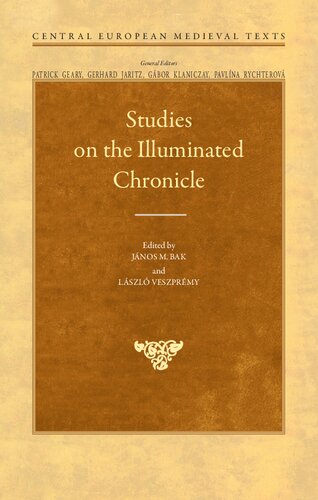

Most ebook files are in PDF format, so you can easily read them using various software such as Foxit Reader or directly on the Google Chrome browser.
Some ebook files are released by publishers in other formats such as .awz, .mobi, .epub, .fb2, etc. You may need to install specific software to read these formats on mobile/PC, such as Calibre.
Please read the tutorial at this link: https://ebookbell.com/faq
We offer FREE conversion to the popular formats you request; however, this may take some time. Therefore, right after payment, please email us, and we will try to provide the service as quickly as possible.
For some exceptional file formats or broken links (if any), please refrain from opening any disputes. Instead, email us first, and we will try to assist within a maximum of 6 hours.
EbookBell Team

4.4
62 reviewsThe present volume of studies is the first Subsidium of the Central European Medieval Text series, accompanying CEMT vol. 9 on the Illuminated Chronicle (formerly called the Vienna Chronicle), written in the fourteenth century, which represents the international artistic style at the royal court of Louis I of Hungary. The volume of the text and its annotations did not allow including the detailed scholarly introduction into the same volume as is the custom with the other CEMT items. The essays in the book analyze the text and the illuminations of the Illuminated Chronicle in literaryhistorical, art historical and heraldic context. The relevant literature that goes back to more than 200 years is also summarized. Additional studies address issues connected with the narrative. Since the chronicle starts with the history of the Huns, imaginary ancestors of the Hungarians, the Attila tradition in Hungarian history writing is discussed. Extensive coverage is offered on the dynastic struggles of the eleventh century, placing them into the context of amicitia and deditio. The image of King St. Ladislas I as the "ideal king" is reviewed, a topic that received conspicuously detailed coverage in the chronicle. Finally, the fate of the fourteenthcentury chronicle texts during the subsequent centuries is examined, their appearance in legal texts, and their reception abroad.